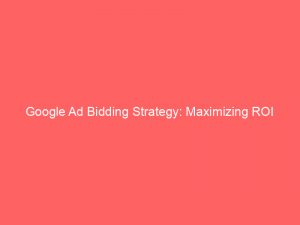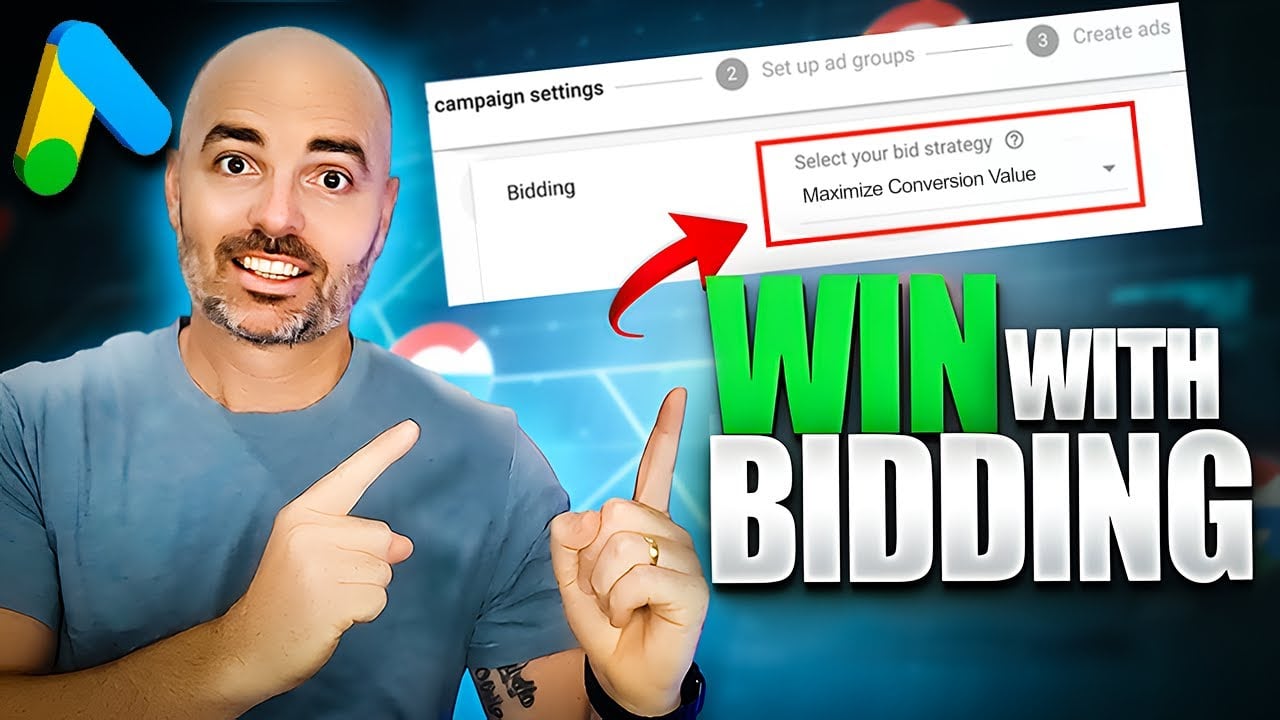GoogleAds has become the go-to platform for businesses to reach their target audience in today’s digital age. With its vast array of biddingstrategies, it offers a world of possibilities to advertisers.
But with so many options to choose from, finding the right biddingstrategy can be overwhelming. Do you want to maximize conversions?
Gain clicks and traffic? Boost brand awareness?
Or perhaps, you have a specific event or political campaign in mind? In this article, we will explore the fascinating world of Google Ad biddingstrategies and help you uncover the best approach to meet your advertising goals.
Whether you’re a seasoned marketer or just starting out, get ready to dive into the world of intelligent bidding!
Table of Contents
- google ad bidding strategy
- Introduction To Google Ads Bidding Strategies
- Bidding Options Available In Google Ads
- Utilizing AI With Smart Bidding Strategies
- Maximize Clicks And Manual CPC Bidding For Click-Focused Campaigns
- Target Impression Share And CPM Bidding For Maximizing Visibility
- vCPM Bidding For Increasing Brand Awareness
- CPV Bidding For Video Ads
- vCPM Limitations For Direct Response Campaigns
google ad bidding strategy
Google Ads offers various bidding strategies to cater to different goals and campaign types. These strategies include cost-per-click (CPC), cost-per-thousand viewable impressions (vCPM), and cost-per-view (CPV) bidding.
Smart Bidding, powered by artificial intelligence (AI), optimizes bids for conversions and offers multiple strategies. For campaigns focused on gaining clicks and website traffic, Maximize Clicks and Manual CPC bidding are recommended.
To maximize visibility, Target Impression Share and CPM bidding are suitable strategies. vCPM bidding is effective for increasing brand awareness, while CPV bidding is specific to video ads.
However, vCPM is not suitable for direct response campaigns, but it can be useful for events or political advertising.
Key Points:
- Google Ads offers various bidding strategies such as:
- CPC (Cost-Per-Click)
- vCPM (Viewable Cost-Per-Thousand Impressions)
- CPV (Cost-Per-View)
- Smart Bidding, powered by AI, optimizes bids for conversions and offers multiple strategies
- Maximize Clicks and Manual CPC bidding are recommended for campaigns focused on gaining clicks and website traffic
- Target Impression Share and CPM bidding are suitable strategies for maximizing visibility
- vCPM bidding is effective for increasing brand awareness
- CPV bidding is specific to video ads, but vCPM is not suitable for direct response campaigns
Sources
https://support.google.com/google-ads/answer/2472725?hl=en
https://support.google.com/google-ads/answer/2459326?hl=en
https://ads.google.com/intl/en_us/home/measurement/bidding/
https://support.google.com/google-ads/answer/6167148?hl=en
Check this out:
💡 Pro Tips:
1. Consider using Target CPA bidding for campaigns focused on maximizing conversions. This bidding strategy leverages AI to optimize bids for your desired cost per acquisition.
2. Use bid adjustments to customize your bids based on factors such as device, location, or time of day. This can help you refine your targeting and increase the likelihood of reaching your desired audience.
3. Experiment with different bidding strategies to find the one that best aligns with your campaign goals. Test out strategies like Enhanced CPC or Target ROAS to see which one delivers the best results for your specific objectives.
4. Take advantage of Google’s ad scheduling feature to adjust your bids based on when your target audience is most active. By increasing bids during peak times, you can increase your chances of capturing valuable clicks and conversions.
5. Regularly analyze and adjust your bid strategy based on performance metrics. Keep a close eye on key metrics like click-through rate, conversion rate, and cost per conversion to identify any areas where adjustments may be needed.
Introduction To Google Ads Bidding Strategies
Google Ads is an advertising platform that offers various bidding strategies to help advertisers achieve their goals and optimize their campaign performance. Bidding strategies determine how much an advertiser is willing to pay for each click, impression, or view on their ads.
By understanding and utilizing these bidding strategies effectively, advertisers can maximize their return on investment (ROI) and make data-driven decisions.
Bidding Options Available In Google Ads
Google Ads provides several bidding options to cater to different campaign types and goals. The available bidding options include:
It is suitable for campaigns focused on gaining clicks and website traffic.
It is suitable for increasing brand awareness and maximizing visibility.
It is ideal for campaigns centered around video content.
Utilizing AI With Smart Bidding Strategies
Google Ads also offers Smart Bidding, which utilizes artificial intelligence (AI) to optimize bids for conversions. Smart Bidding offers multiple strategies to choose from, such as:
Smart Bidding allows advertisers to automate the bidding process and make real-time adjustments based on a wide range of factors, including device, location, time of day, and audience.
Maximize Clicks And Manual CPC Bidding For Click-Focused Campaigns
For campaigns that primarily focus on gaining clicks and website traffic, Google Ads recommends using the Maximize Clicks and Manual CPC bidding strategies.
It is useful when the primary objective is to drive traffic to a website.
It allows for more precise bidding control and is suitable for experienced advertisers who want maximum flexibility.
To maximize visibility and ensure ads are shown in prominent positions, Google Ads provides the Target Impression Share and CPM bidding strategies.
It is beneficial for advertisers who want to increase their share of voice or dominate a specific market.
It is a suitable strategy for campaigns focused on increasing brand visibility.
vCPM Bidding For Increasing Brand Awareness
Cost-Per-Thousand Viewable Impressions (vCPM) bidding is specifically designed to increase brand awareness by paying for every thousand impressions that are viewable to users. This strategy is ideal when the primary objective is to generate exposure and reach a broader audience.
However, it is important to note that vCPM bidding may not be suitable for campaigns that require direct response or immediate conversions. Instead, it is more valuable for events or political advertising where the goal is to build brand recognition and create buzz.
CPV Bidding For Video Ads
CPV bidding is a unique bidding strategy offered by Google Ads exclusively for video ads. With this strategy, advertisers only pay when a viewer watches their video ad.
It is well-suited for campaigns centered around video content, as advertisers can optimize their bids to maximize video views and engagement. CPV bidding enables advertisers to capture the attention of their target audience effectively and ensure their video ads are seen by interested viewers.
vCPM Limitations For Direct Response Campaigns
While vCPM bidding is an effective strategy for increasing brand awareness and generating exposure, it may not be the best choice for direct response campaigns that rely on immediate conversions. The focus of vCPM bidding is to increase visibility and reach a larger audience, rather than driving immediate actions.
Therefore, advertisers should carefully consider their campaign objectives and select a bidding strategy that aligns with their specific goals and target audience.
In conclusion, Google Ads offers a variety of bidding strategies to cater to different goals and campaign types. Understanding the available options and utilizing AI through Smart Bidding can help advertisers make data-driven decisions and maximize their ROI.
Whether the objective is to gain clicks, increase brand visibility, or promote video content, Google Ads provides a range of bidding strategies to meet various advertising goals. Advertisers should carefully evaluate their campaign objectives and target audience to select the most suitable bidding strategy for their specific needs.









